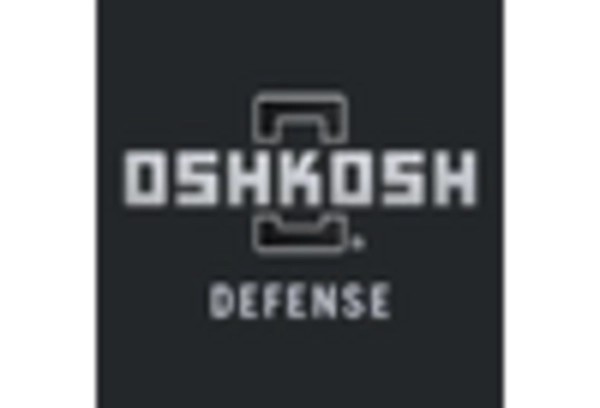Focus on Operational Versatility
The Military Hybrid Electric Vehicle HEV and Electric Vehicle EV Market is characterized by a growing emphasis on operational versatility. Military operations often require vehicles that can adapt to various terrains and mission profiles. Hybrid and electric vehicles offer unique advantages, such as silent operation and reduced thermal signatures, which are essential for stealth missions. Furthermore, the ability to switch between electric and hybrid modes allows for greater flexibility in diverse operational scenarios. This adaptability is likely to drive the adoption of HEVs and EVs within military fleets, as they can meet the multifaceted demands of modern warfare.
Cost-Effectiveness Over Lifecycle
The Military Hybrid Electric Vehicle HEV and Electric Vehicle EV Market is increasingly recognized for its cost-effectiveness over the lifecycle of military vehicles. While the initial investment in hybrid and electric technologies may be higher, the long-term savings associated with reduced fuel consumption and lower maintenance costs are compelling. Studies suggest that military organizations can save millions over the lifespan of a vehicle by transitioning to HEVs and EVs. This financial incentive, coupled with the potential for enhanced operational readiness, positions hybrid and electric vehicles as a viable solution for modern military needs.
Increased Demand for Energy Efficiency
The Military Hybrid Electric Vehicle HEV and Electric Vehicle EV Market is experiencing a notable surge in demand for energy-efficient solutions. Military organizations are increasingly prioritizing vehicles that minimize fuel consumption and reduce operational costs. The integration of hybrid and electric technologies allows for significant reductions in fuel usage, which is particularly crucial in remote operations where logistics can be challenging. Reports indicate that military fleets utilizing hybrid systems can achieve fuel savings of up to 30% compared to traditional vehicles. This trend is likely to continue as defense budgets increasingly allocate funds towards sustainable technologies, thereby enhancing the appeal of HEVs and EVs in military applications.
Regulatory Support and Policy Frameworks
The Military Hybrid Electric Vehicle HEV and Electric Vehicle EV Market is bolstered by supportive regulatory frameworks and policies aimed at promoting cleaner technologies. Governments are implementing stringent emissions regulations that necessitate the adoption of low-emission vehicles within military fleets. This regulatory environment encourages defense contractors to innovate and develop advanced hybrid and electric systems. For instance, various defense departments have set ambitious targets for reducing greenhouse gas emissions, which directly influences procurement strategies. As a result, military organizations are more inclined to invest in HEVs and EVs, aligning with national and international sustainability goals.
Technological Innovations in Battery Systems
The Military Hybrid Electric Vehicle HEV and Electric Vehicle EV Market is significantly influenced by advancements in battery technology. Innovations in energy storage solutions, such as lithium-ion and solid-state batteries, are enhancing the performance and operational range of military vehicles. These developments not only improve the efficiency of hybrid and electric systems but also address concerns regarding the weight and longevity of batteries in demanding military environments. As battery technology continues to evolve, it is anticipated that military organizations will increasingly adopt HEVs and EVs, thereby transforming their operational capabilities and reducing reliance on fossil fuels.


















Leave a Comment